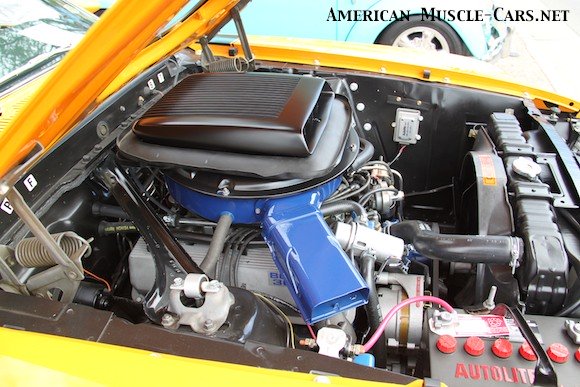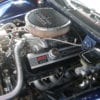Ford Boss 302 V8 Engine

FORD BOSS 302 V8 ENGINE BACKGROUND
The Boss 302 (both the car and the engine) was motivated by Ford’s desire to compete in the SCCA (Sports Car Club of America) Trans Am racing series, in which Pony Cars competed with factory backing, but engines could not exceed 5.0 liters in displacement (302 cubic inches). Chevy fielded the seminal 1969 Camaro Z28 with the high-winding DZ302, and across town Mopar readied their new-for-1970 Dodge Challenger T/A and Plymouth Barracuda AAR, both with small blocks that met the rules. Pontiac even came out with a car named the Trans Am, but ironically it couldn’t qualify to run in the Trans Am series because its engine was too big. But everyone was cashing in on the Trans Am series by building production car-versions of their racers, which also satisfied SCCA’s ruling that a minimum of 1,000 units be sold to the public, establishing it as a ‘production car’. Ford wanted some. Ford developed the new Boss 302 V8 engine specifically to compete in the series, after the Tunnel Port 302 proved unreliable. It was civilianized for the production version.

1969 FORD MUSTANG BOSS 302 V8 ENGINE
But what really made the Mustang Boss 302 special was its engine, the Boss 302 V8. Ford started with the 302 small block, strengthened it, added 4-bolt main bearing caps, a forged steel crankshaft and connecting rods. Redesigned cylinder heads had huge intake and exhaust ports, large, angled valves (2.23” intake and 1.72” exhaust) actuated by adjustable rocker arms. An aluminum high-rise intake manifold mounted a 780cfm Holley 4-barrel carburetor. The cam was sort of a “street & strip” grind with mechanical lifers, which spun a dual-point distributor. With dual exhaust helping it breathe well, this was an engine that loved to wind. Ford installed a rev-limiter to protect it from over-revving, which put a halt to the festivities at 6,150rpm. Without it, the Boss 302 would routinely rev to 7,000rpm with momentary bursts to 7500rpm. It was rated at a conservative 290hp at 5,800rpm and would do the quarter-mile in the high 14-second range, and do 0-60 in less than 7 seconds. But they weren’t just fast, they also handled well, for the times at least. A Boss 302 placed second in the 1969 Trans Am Series, and won it in 1970.

1970 FORD MUSTANG BOSS 302 V8 ENGINE
The Boss 302 V8 engine was known to be “peaky”, meaning it didn’t produce big power until very high RPMs, making it fast, but very hard to drive. Some effort was made in 1970 to solve this. Smaller intake valves were fitted, reduced from 2.23 inches to 2.19 inches. Even this seems way too big for an engine of this size. The DZ302 in the ’69 Camaro Z28 only had 2.02-inch intake valves, and it too was peaky. Even Chevy’s mighty 454 cubic inch big block only had a 2.19-inch intake valve, the same size as this 302 cubic inch Ford engine was downsizing to. It was still peaky, making most of its power above 6500 rpm. Ford decided to drop the expensive cross-drilled crankshaft in favor of a cheaper non-drilled unit, finding that it made no difference in street use. Visually, the chromed pressed-steel valve covers were replaced by finned cast-aluminum valve covers.
Ford Boss 302 V8 Engine SPECIFICATIONS
| ENGINE SPECS
Engine type Displacement Bore & Stroke Compression ratio Fuel system Horsepower output @ RPM Torque output @ RPM PERFORMANCE Zero-to-60mph 1/4-mile ET @ MPH |
90-degree OHV V8
302.6 ci 4.00″ X 3.00″ 10.5:1 1X4bbl carburetor 290 hp @ 5800 rpm 290 lb/ft @ 4300 rpm 6.5 sec 14.8 sec @ 96 mph |
4942cc
101.6 mm X 76.2 mm Holley 780 CFM |







